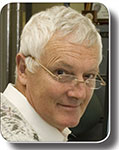What we know (and what we don’t) about the petroleum prospectivity of the Northland Basin, North Island, New Zealand
Chris UruskiGNS Science
The APPEA Journal 49(1) 383-404 https://doi.org/10.1071/AJ08023
Published: 2009
Abstract
The offshore Northland Basin is a major sedimentary accumulation lying to the west of the Northland Peninsula of New Zealand. It merges with the Taranaki Basin in the south and its deeper units are separated from Deepwater Taranaki by a buried extension of the West Norfolk Ridge. Sedimentary thicknesses increase to the northwest and the Northland Basin may extend into Reinga. Its total area is at least 65,000 km2 and if the Reinga Basin is included, it may be up to 100,000 km2.
As in Taranaki, petroleum systems of the Northland Basin were thought to include Cretaceous to Recent sedimentary rocks. Waka Nui–1 was drilled in 1999 and penetrated no Cretaceous sediments, but instead drilled unmetamorphosed Middle Jurassic coal measures. Economic basement may be older meta-sediments of the Murihiku Supergroup. Thick successions onlap the dipping Jurassic unit and a representative Cretaceous succession is likely to be present in the basin. Potential source rocks known to be present include the Middle Jurassic coal measures of Waka Nui–1 and the Waipawa Formation black shale. Inferred source rocks include Late Jurassic coaly rocks of the Huriwai Beds, the Early Cretaceous Taniwha Formation coaly sediments, possible Late Cretaceous coaly units and lean but thick Late Cretaceous and Paleogene marine shales.
Below the voluminous Miocene volcanoes of the Northland arc, the eastern margin of the basin is dominated by a sedimentary wedge that thickens to more than two seconds two-way travel time (TWT), or at least 3,000 m, at its eastern margin and appears to have been thrust to the southwest. This is interpreted to be a Mesozoic equivalent of the Taranaki Fault, a back-thrust to subduction along the Gondwana Margin. The ages of sedimentary units in the wedge are unknown but are thought to include a basal Jurassic succession, which dips generally to the east and is truncated by an erosional unconformity. A southwestwards-prograding succession overlies the unconformity and its top surface forms a paleoslope onlapped by sediments of Late Cretaceous to Neogene ages. The upper succession in the wedge may be of Early Cretaceous age—perhaps the equivalent of the Taniwha Formation or the basal succession in Waimamaku–2.
The main part of the basin was rifted to form a series of horst and graben features. The age of initial rifting is poorly constrained, but the structural trend is northwest–southeast or parallel to the Early Cretaceous rifting of Deepwater Taranaki and with the Mesozoic Gondwana margin.
Thick successions overlie source units which are likely to be buried deeply enough to expel oil and gas, and more than 70 slicks have been identified on satellite SAR data suggesting an active petroleum system. Numerous structural and stratigraphic traps are present and the potential of the Northland Basin is thought to be high.

Chris Uruski currently leads the Frontier Basins Project for GNS Science. He graduated in geology from the University College of Wales, Aberystwyth, in 1974. He then spent a short time in the Royal Navy. Chris spent the next ten years as a marine geologist and geophysicist, first at Aberystwyth, then Durham university and then became a consultant in the oil industry before moving to New Zealand in 1987. Since then he has been employed as a seismic interpreter at the New Zealand Geological Survey, now GNS Science. He has a particular interest in deepwater basins and believes that the deepwater regions around New Zealand may contain large quantities of hydrocarbons which may sustain New Zealand as a net oil exporter for many years to come. c.uruski@gns.cri.nz |


